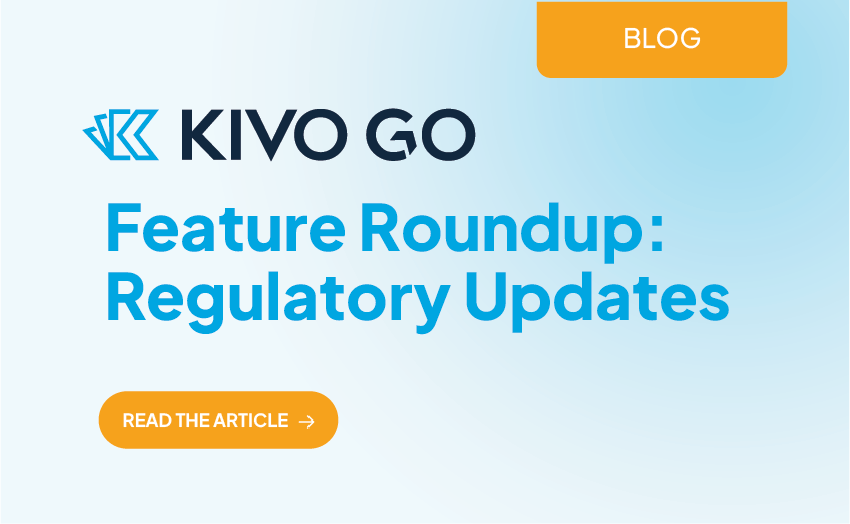Alongside the launch of our QMS, we’ve also made some big improvements to our regulatory management capabilities. In this article, we’ll outline what’s new and how those changes can streamline regulatory operations.
Let’s get started!
Correspondence and Commitment Management
Keeping track of regulatory correspondence and commitments is essential to any successful drug or device submission. However, keeping track of multiple studies across multiple countries (and therefore multiple regulatory agencies) can become daunting fairly quickly. With Kivo’s new Regulatory Activity functionality, you can log all correspondence and commitments easily.
Let’s take a look at how this works.
First, you’ll add a new Regulatory Activity. Select Commitment or Correspondence from the dropdown menu. If we start with Correspondence, you’ll fill out the appropriate fields, including which application the correspondence is regarding, which agency, the point(s) of contact, the format of correspondence, and if there is a relevant due date. These fields are completely customizable to match your process and needs.
Once the correspondence is added, you can add it to the relevant cabinet in the DMS with the click of a button. This will create the appropriate file structure and placeholder for the correspondence itself. Drag and drop your correspondence into the placeholder, and that’s it!
Within the reporting tab, you can easily view all your correspondence at a glance in the correspondence log. The log can be sorted or filtered by application, health authority, due date, and more. Commitments can be viewed in the commitment tracker, also filterable by application, health authority, and due date.
Regulatory Project Management
Project management spans all the modules of Kivo GO (Regulatory, Quality, and Clinical), but in this article we’ll specifically focus on Regulatory project management. You can start a variety of regulatory projects within Kivo, including applications, submissions, clinical studies, and more. For the purpose of this article, we’ll talk through a submission project.
When you create a new submission as a project inside Kivo, Kivo will automatically create a project plan based on the submission type, broken out by milestone. The project plan is based on a fully configurable template, though we offer an out-of-the-box version. As you tweak your process, you can save any project as a new template with a single click. For our example submission, our milestones include CMC, Non-Clinical, Summaries, etc.
Within each milestone are tasks, which are grouped by general work area (in our example, “Appendix”, “Drug Product”, etc). Each task can be assigned to an individual and tagged with status, start and end dates, and task type, such as content. As you build out your start and end-dates, you’ll be creating your full submission timeline! Once you have assigned tasks and your team is working on the submission, you can use the status field to see what is not started, in progress, in review, complete, or blocked. The Kanban view or reporting tool can be particularly helpful to quickly identify any blocked tasks.
Each task can also contain several different pieces of information that can improve your workflow. For example, many of the tasks in a submission project are documents that must be authored. Each of these documents has to go through a mini process - authoring the initial draft, a review process, QC check for formatting, and then approval. To keep track of this, we’ve created Checklists, or sub-tasks, that can be configured to your process. When a checklist is complete, you have the option to automatically mark the main task as complete as well.
You can also add dependencies to specific tasks, as well as link tasks directly to related documents in the DMS. Dependencies allow you to anticipate blockers, and direct document linking minimizes the time spent searching the system for the appropriate file. With document links, you also have the ability to mark a task as complete when the linked document (or documents) is approved. This helps ensure your status fields are accurate, and keeps your team from having to update status manually.
The goal of our project management capabilities, at the end of the day, is to accelerate your submission timelines. By templatizing repeatable projects, automatically building out the associated tasks, and providing easy reporting, you can streamline your regulatory operations without adding additional resources (and without changing your preferred workflow). This gives you greater visibility - and therefore greater control - over your submissions and other regulatory activities.
In Summary
The expanded capabilities of our regulatory management system (RIM system) are designed to help improve your ability to deliver projects on time and complete, including every piece of correspondence. You have a lot to manage and remember; allow a system designed to match your process to take some of the load off.
If you'd like to speak with a member of our team, request a demo any time.


